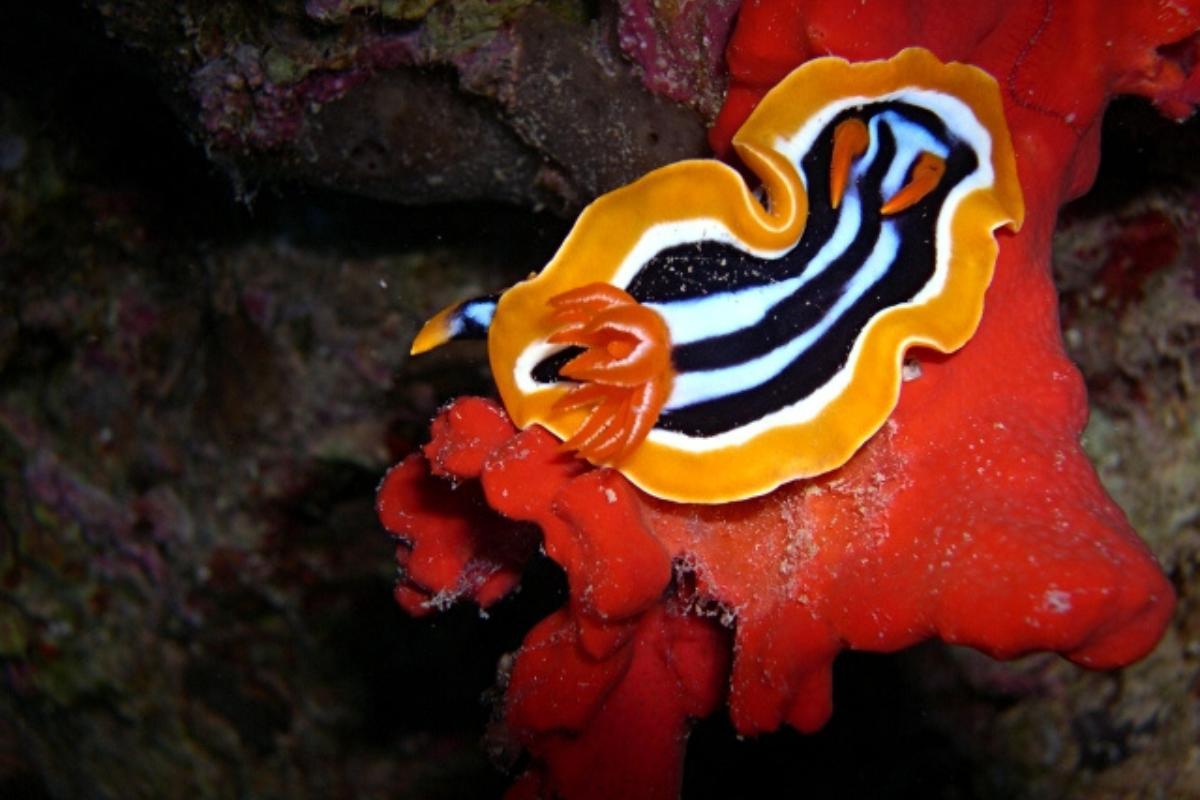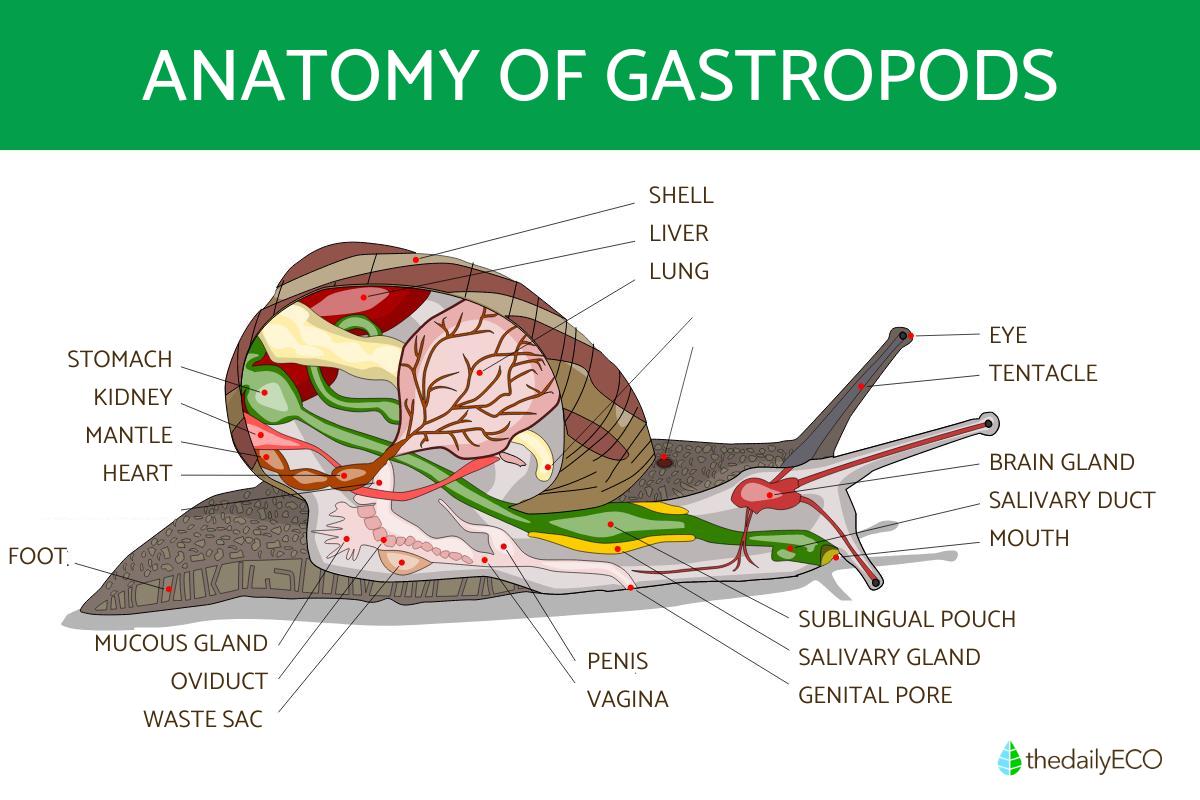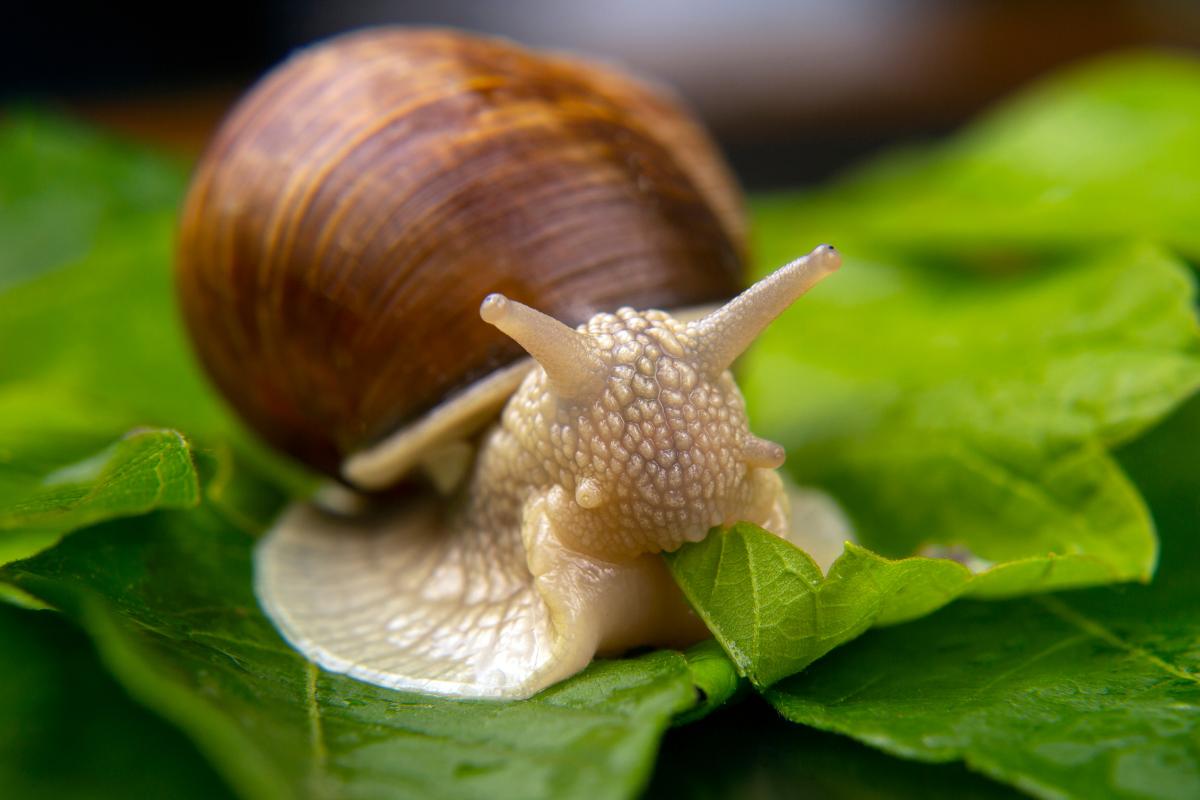What Are Gastropods in Biology?


Gastropods are a vast and diverse group of mollusks, commonly known as snails and slugs. Gastropods showcase an extraordinary diversity of form and function. As the only mollusks to conquer both land and sea, these creatures have evolved remarkable adaptations to thrive in a wide range of habitats. Despite their varied appearances and lifestyles, gastropods share a common anatomical blueprint that sets them apart from other invertebrates.
In this article by thedailyECO, we explain what gastropods are, explore their defining characteristics, diverse types, and intriguing adaptations.
What are gastropods?
Within the scientific classification of living beings, gastropods form their own class, called Gastropoda, which includes all species of snails and slugs.
This group is part of the phylum Mollusca, making them related to other mollusks such as bivalves (e.g., clams) and cephalopods (e.g., octopuses). Gastropods comprise about 80% of all mollusk species, making them the largest class within the phylum.
Gastropods are highly diverse but generally characterized by an elongated body with a large foot at its base used for locomotion and a single spiral-shaped shell in which the animal can retreat. However, many species have lost this shell through evolution, resulting in slugs and other shell-less gastropods such as nudibranchs.
Characteristics of gastropods
Despite being a large and varied group, all gastropods share basic physical characteristics that make them easily distinguishable. Their bodies can be divided into distinct parts:
- Visceral mass: this is the main body section and houses the animal's vital organs, including those for digestion, reproduction, and breathing.
- Mantle: a protective layer that covers the visceral mass. In many species, it also produces the shell.
- Head: the front part of the gastropod, containing the mouth and sensory organs. These often include tentacles with simple eyes for detecting light.
- Foot: this muscular structure is located on the underside of the body and is used for movement. It's how gastropods crawl or swim, depending on the species. The name "gastropod" actually means "stomach foot."
Gastropods undergo a remarkable developmental process called torsion during their larval stage. This involves a dramatic 180-degree rotation of the visceral mass, mantle, and shell. As a result, the animal's body undergoes significant changes, including the repositioning of the digestive tract's opening to the front.
While the exact purpose of torsion remains a mystery, scientists believe it serves two primary functions:
- Torsion may help adjust the gastropod's center of gravity.
- It allows the animal to retract more effectively into its shell for safety.
If you're curious about the classification of octopuses, check out our article on whether or not they are mollusks.

Types of gastropods
Gastropods are an incredibly diverse group, with over 80,000 described species. Traditionally, gastropods are classified into three groups: pulmonate gastropods, prosobranch gastropods, and opisthobranch gastropods. Let's explore their characteristics:
Pulmonate gastropods
Pulmonate gastropods have undergone a significant evolutionary adaptation: the development of a lung-like cavity. This respiratory organ, rich in blood vessels, replaced the gills found in their aquatic ancestors.
While many pulmonates retain shells, this characteristic varies widely, with some species completely lacking them. This adaptability has allowed them to thrive in diverse terrestrial and freshwater environments. Interestingly, most pulmonates are hermaphroditic, possessing both male and female reproductive organs.
Examples of pulmonate gastropods include:
- Achatina fulica
- Limax cinereoniger
- Zonitoides arboreus
Prosobranch gastropods
Prosobranch gastropods are primarily aquatic, with a strong predominance in marine environments. Unlike pulmonates, they typically breathe through gills. A defining characteristic is the placement of their gills: in front of the heart. While most prosobranchs maintain this aquatic adaptation, some species have evolved to live on land, developing lung-like structures.
Examples of prosobranch gastropods include:
- Hedleya macleayi
- Haliotis geigeri
- Puperite pupa
Opisthobranch gastropods
Opisthobranch gastropods are distinguished by the placement of their gills, located behind the heart. This group is particularly diverse, encompassing a wide range of marine species commonly known as sea slugs.
Many opisthobranchs are carnivores, feeding on a variety of marine organisms such as sponges, hydroids, and other invertebrates. While gills are the primary respiratory organ, some species have evolved to also breathe through their skin.
Examples of opisthobranch gastropods include:
- Aplysia californica
- Ardeadoris egretta
- Elysia crispata
However, it's important to note that this classification system is considered outdated. More recent studies based on genetic and anatomical evidence have led to a revised taxonomy that better reflects the evolutionary relationships between different gastropod groups.

Where do gastropods live?
Unlike many other animal groups, gastropods have conquered both aquatic and terrestrial environments with remarkable success.
Marine environments are undoubtedly the most diverse habitat for gastropods. Coastal waters, in particular, teem with a rich array of species, benefiting from the abundance of food sources. From the intertidal zone to the deep sea, these mollusks have adapted to a wide range of conditions. A fascinating group of marine gastropods are the pelagic species, such as the sea butterfly (Thecosomata). Unlike their bottom-dwelling counterparts, these organisms inhabit the open water column, drifting with ocean currents as part of the plankton.
While less common than their marine counterparts, some gastropods live in freshwater habitats like rivers, lakes, and ponds. They have evolved specific adaptations to survive in these environments, such as specialized gills for oxygen extraction and mechanisms to cope with fluctuating water conditions.
Gastropods have also adapted to life on land. They have developed lungs for breathing air and protective shells (in most cases) to combat desiccation. These terrestrial species can be found in diverse habitats, from forests and grasslands to gardens and urban areas.
This versatility reflects their evolutionary success. Over millions of years, gastropods have developed a range of physical and physiological adaptations that allow them to survive and reproduce in vastly different conditions. For instance, some species have evolved specialized gills for aquatic life, while others have developed lungs for terrestrial existence. Their ability to modify their shell structure, diet, and reproductive strategies has been crucial to their colonization of various environments.
This adaptability has contributed to the incredible diversity of gastropod species found around the world, making them one of the most successful groups of animals on Earth.
Discover the extraordinary world of the volcano snail, also known as the scaly-foot gastropod, in our next article.

What do gastropods eat?
Given the wide variety of gastropods and their diverse habitats, their eating habits vary greatly. Their feeding strategies are largely determined by their habitat, physical adaptations, and specific ecological niches. Some are herbivores, others feed on plankton, and some are carnivores or scavengers, consuming both plant and animal matter.
Most gastropods use a radula for feeding. The radula is a ribbon-shaped structure located at the base of the oral cavity. It has small, chitinous teeth that allow the animal to scrape food and ingest it. This versatile structure allows them to scrape algae, drill through shells, and even tear flesh, depending on the species.
It's important to note that the dietary habits of gastropods can change throughout their life cycle, and many species exhibit opportunistic feeding behaviors.
Ever wondered how snails eat? Discover the surprising truth about their teeth in our next article.

How do gastropods reproduce?
Gastropod reproductive strategies are as diverse as their habitats. While certain patterns emerge, there is considerable variation among species.
Many gastropods, particularly those inhabiting terrestrial and freshwater environments, are hermaphroditic, possessing both male and female reproductive organs. This unique characteristic allows for self-fertilization, though cross-fertilization through mating is often preferred. However, a contrasting reproductive strategy is found in numerous marine gastropods, which exhibit distinct sexes, with individuals being either male or female.
Fertilization methods also vary between gastropod groups. Terrestrial species predominantly engage in internal fertilization, exchanging sperm during mating. In contrast, many marine gastropods release their gametes (eggs and sperm) into the water for external fertilization.
Following fertilization, the developmental path of gastropods diverges. The majority lay eggs, which subsequently hatch into juvenile snails or slugs. Nevertheless, a notable exception occurs in certain marine species, where live birth is the mode of reproduction.
You might also be interested in learning about copepods, tiny crustaceans that form the base of many marine food chains.
If you want to read similar articles to What Are Gastropods in Biology?, we recommend you visit our Wild animals category.
- Hall, M. 2011. "Conus geographus" (On-line), Animal Diversity Web. Accessed April 12, 2022. Viewed at: https://animaldiversity.org/accounts/Conus_geographus/
- Myers, P. and J. Burch 2001. "Gastropoda" (On-line), Animal Diversity Web. Accessed April 11, 2022. Viewed at: https://animaldiversity.org/accounts/Gastropoda/
- Solem, G. Alan. "gastropod". Encyclopedia Britannica, 12 May. 2020. Viewed at: https://www.britannica.com/animal/gastropod. Accessed 14 April 2022.









